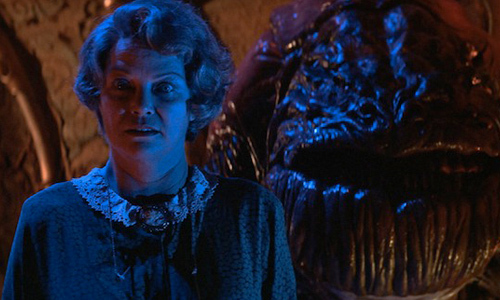
Considering how fresh and dangerous his best films continue to feel decades after they were made, it’s easy for me to forget that Tobe Hooper was my dad’s age. Even though he took a different path than most of the people of his generation who aged in relatively conservative manners when it came to social attitudes and the creation of art, Hooper was still a baby boomer and he consumed the same movies, comic books, music, and paranoia of every other kid who came of age in the ’50s. That marriage of nuclear-age sci-fi movies and cold war skittishness came to the forefront with three films that Hooper directed in a five year period that found him steering away from the surreal, sometimes graphic horror of his early career and toward throwback sci-fi flicks that he filtered through his own cynical perspective.
Filmed in 1984 and released in 1985, LIFEFORCE was the first picture Hooper made with Cannon Films. Adapted from Colin Wilson’s novel The Space Vampires, it was intended to be the epic blockbuster that turned producers Menahem Golan and Yoram Globus from low-budget purveyors of schlocky (but fun) action and horror films starring Charles Bronson and Chuck Norris into major players in world cinema. To that end, they gave Hooper a $25 million budget, changed the name from the title of the book to LIFEFORCE (because they thought it sounded classier—befitting the new reputation they were trying to create for themselves) and wound up with a complete headscratcher of a film that was both old fashioned in its patient build up and modern in its overblown spectacle on the back end.

When Hooper signed his three picture deal with Cannon, he was coming off the mega-success of POLTERGEIST. Cannon reportedly made the deal contingent on one of the three films being THE TEXAS CHAINSAW MASSACRE 2 (which Hooper did deliver as the final film of his contract with them), but gave Hooper more or less carte blanche to do what he wanted for the other two films. Never before or again would he have that kind of creative freedom with the budgets promised to back up his increasingly huge visions. But we know how it goes when something seems too good to be true.
The production of LIFEFORCE was marred by clashes between Hooper and Golan-Globus, filming was shut down at least once because of a sudden lack of funds, and Hooper’s initial edit of the film was cut down from a reported 127 minutes to 117 minutes for the international cut (which North American distributor Tri-Star Pictures further cut down to 101 minutes). The initial critical reception was not kind and the film was a massive financial disaster for Cannon Films.
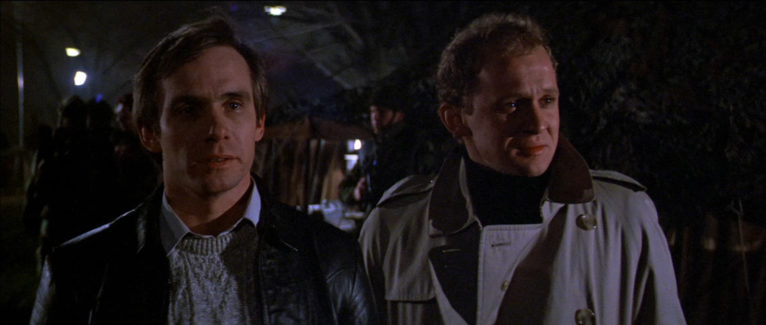
I unabashedly love LIFEFORCE. I have rarely been able to put that love into a cohesive argument for its merits. The closest I ever came was in this piece I wrote years ago for a (now defunct) site I co-founded. Looking back on that piece, I would like to smack my younger self across the back of the head. Most of my backhanded compliments regarding the film’s crazy tone and plot holes are wrong. Having re-watched it several times since writing that review, I see now how Hooper and screenwriters Dan O’Bannon and Don Jakoby actually do provide all the information to connect the plot points, they just do so in ways that the exposition can get lost in the chaos of a London plunging into apocalyptic destruction. Never let it be said that LIFEFORCE is a film that does not reward close attention.
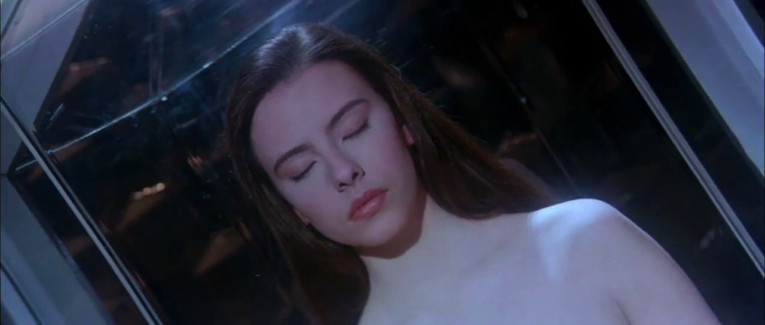
While LIFEFORCE is a blast of over-the-top fun as a pulpy sci-fi spin on the vampire genre, what gives it staying power is the way that Hooper managed to pull off a tone similar to Hammer’s QUATERMASS films that is filtered through his own subversive sense of humor. At the same time that Hooper ramps up the eroticism to more explicit levels than Hammer ever got away with (even in their smuttier ’70s output) he doubles down on the very British nature of the procedural investigation part of the film. Given Hooper’s very Texas attitude and that the script was adapted by a couple of Americans, it’s sort of amazing how much the film feels exactly like those great Hammer productions of the ’50s and ’60s. Part of this is due to the excellent cast of British character actors Hooper assembled (Peter Firth, Patrick Stewart, Frank Finlay, Aubrey Morris, Michael Gothard, Nicholas Ball) and part of it is that he clearly has such a handle on the tone of Hammer horror films and the sort of “stiff upper lip” British heroes ranging from Sherlock Holmes to Connery-era James Bond (represented here by Firth’s cool, detached secret agent character).
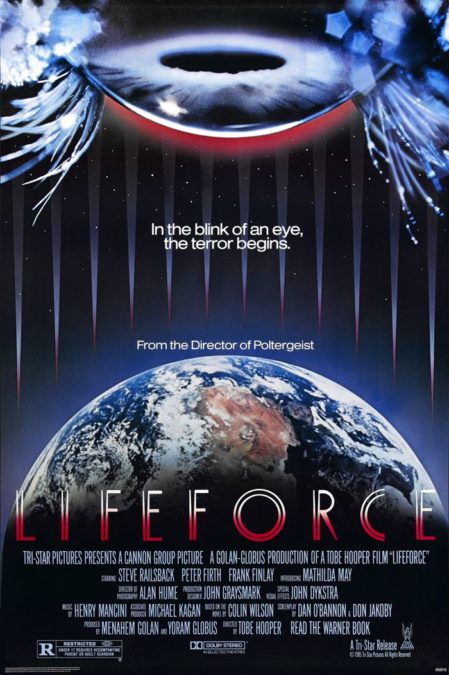
While the crazed third act full of zombie-like creatures and an impressive John Dykstra lightshow are Hooper indulging in the sort of epic spook show theatrics that he played with in POLTERGEIST, everything leading up to it is rooted in the Hammer horror and sci-fi flicks that he grew up on.
Hooper’s follow-up to LIFEFORCE did not just take inspiration from movies of his childhood; it was a direct (and relatively faithful) remake of INVADERS FROM MARS.
Also written by O’Bannon (who co-scripted and took on directing duties on RETURN OF THE LIVING DEAD after Hooper left that film to direct LIFEFORCE) and Jakoby, INVADERS FROM MARS is a raucous, entertaining, surprisingly family-friendly updating of ’50s pulp sci-fi done with modern effects. That said, Hooper gives a cynical, paranoid feel to the film that is distinctly his own.
The story remains more or less the same as the 1953 version. David (Hunter Carson) is a young boy who sees a flying saucer land behind the hill in his backyard, but no one believes him. But then all the adults in his small town start acting…strange, including his parents.
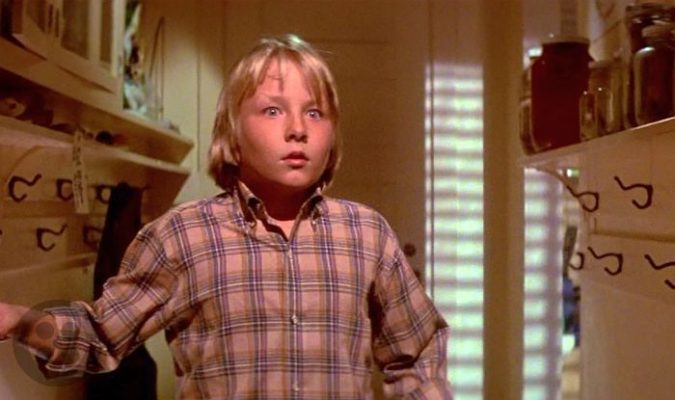
While Hooper’s remake remains so faithful to the original film that Richard Blake, the screenwriter of the 1953 production, received a “based on the screenplay by” credit, this take on the story owes a little more to both the 1956 and 1978 versions of INVASION OF THE BODY SNATCHERS with the way the paranoia is ramped up and the mournful tone of loss that David feels at losing his parents (Timothy Bottoms and Laraine Newman, both doing stellar work in not a lot of screen time).
While Hooper does a good job of placing the audience in David’s shoes when it comes to his sense of loss and fear, he also taps into the ways adults can seem cartoonish or frightening to children. David’s teacher, Mrs. McKeltch (Louise Fletcher), is a stern taskmaster who seems to actively dislike her students even before she is taken over by the aliens. The only other two main adult characters—school nurse Linda (Karen Black) and Marine General Wilson (James Karen)—are goofy caricatures given big, broad strokes to play. The only adults in the film who are portrayed as something resembling three-dimensional human beings are David’s parents, which makes sense. When you are a kid, you see your parents as something different than other adults. It is almost impossible to see your parents as either idiots or the enemy, but it is easy to see your teachers and other authority figures that way. Keeping David’s view of the adults through the film intact may make them seem ridiculous, but it is actually a fairly bold and realistic choice on Hooper’s part.
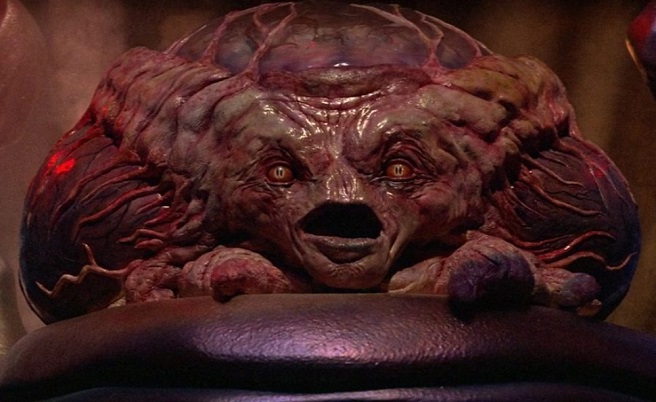
This choice also allows Hooper to indulge in a real sense of pulpy fun that is a definite throwback to the era of sci-fi matinees for kids that he clearly loves. Establishing that slightly zany tone allows for moments like the alien-possessed Mrs. McKeltch to eat a live frog and to show the aliens in excessive detail as beings that are part monsters/part slapstick comedic creations. It helps that the aliens—brought to wonderful life by Stan Winston—look phenomenal. Clearly, a lot of the budget went into the effects work and it all shows on the screen. But showing so much of the aliens and giving them a sadistic sense of humor as they laugh while killing and eating people is exactly what the kids who used to watch those old Saturday afternoon matinee sci-fi triple features wanted to see. Hooper made INVADERS FROM MARS for the type of kid he was in the ’50s and it translated surprisingly well to the ’80s (and still holds up today).
Despite having a budget that was reportedly about half of what he was given for LIFEFORCE, it is arguable that INVADERS FROM MARS was an even bigger financial disappointment. Part of that could be attributed to the very darkly comedic ending that probably led to bad word of mouth (I can only imagine what would have happened if Cinemascore was a thing in 1986). Part of it could be that general audiences were turned off by some of the meta moments in the film (Fletcher is clearly spoofing her role of Nurse Ratched from ONE FLEW OVER THE CUCKOO’S NEST, Jimmy Hunt—who played David in the 1953 original—appears in a cameo as a police officer with a tongue-in-cheek line about not being to the site where David claimed the spaceship landed “since I was kid”). Or it could just be that Hooper’s ambitious mixture of old-fashioned sci-fi kids matinee film with modern cynicism that most authority figures aren’t actually that interested in helping people was hard for audiences to swallow. Whatever the reason, the back-to-back financial bombs were not only very harmful to Hooper’s career, but also exacerbated his already contentious working relationship with Golan and Globus.
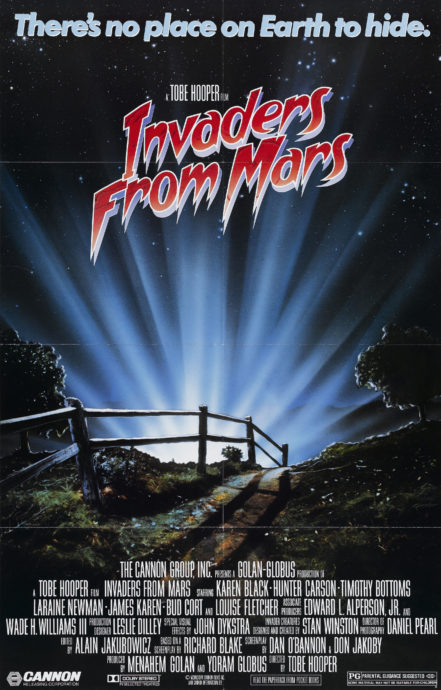
After finishing up his deal with Cannon by delivering the epic, splattery farce that is THE TEXAS CHAINSAW MASSACRE 2 and paying the bills directing some episodic TV, Hooper struck back out on his own as an independent writer/producer/director. Despite working with a much lower budget than provided (at times) by Cannon, he was able to get the truly bizarre, nuclear age-inspired SPONTANEOUS COMBUSTION made.
Where LIFEFORCE and INVADERS FROM MARS both fell into the alien invasion subgenre (and shared an intense interest in space exploration programs and borderline excessive use of extreme wide-angle lenses), SPONTANEOUS COMBUSTION is Hooper’s take on an atomic monster movie while doubling down on the paranoia of INVADERS.
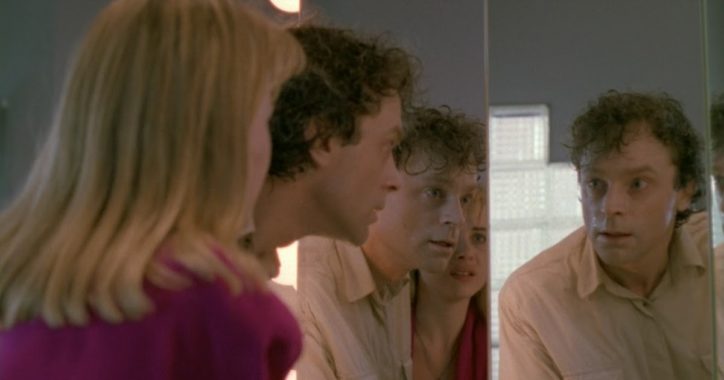
SPONTANEOUS COMBUSTION is the only one of Hooper’s sci-fi throwback films to actually have a portion of the story set in the ’50s. A long prologue establishes a military experiment to create a vaccine to radiation. Squeaky clean newlyweds Brian (Brian Bremer) and Peggy (Stacey Edwards) are put in an underground bunker like a couple of lab rats and have a hydrogen bomb detonated a couple of hundred feet away. Despite surviving the blast with no radiation sickness, the success of the experiment is overshadowed by the discovery that the couple conceived a child in the week that they were in the bunker and taking large doses of the experimental vaccine. Things go even more haywire after the birth of the baby when Brian and Peggy spontaneously combust in the hospital.
The film then jumps ahead thirty-five years to the (then) present day of the late ’80s. Sam (Brad Dourif)—Brian and Peggy’s grown son—is a teacher at a California high school. He has a relatively normal—if messy—life as he deals with his hostile ex-wife Rachel (the great Dey Young) while starting a new relationship with his girlfriend Lisa (Cynthia Bain). He knows nothing about his birth parents or the experiment they went through. The only thing that is unusual about him is a perfectly round birthmark on the back of his hand, the occasional migraine, and a body temperature that runs a constant one hundred degrees.
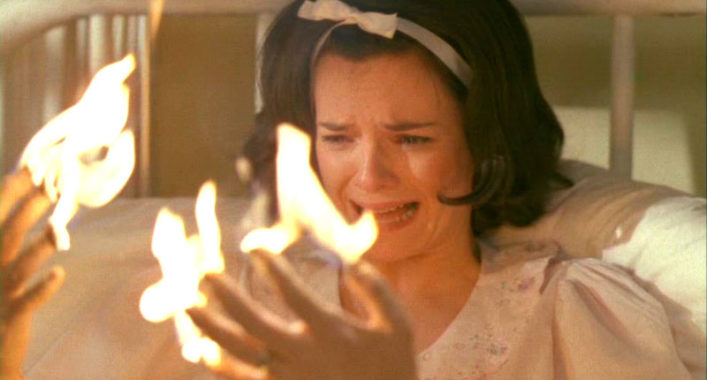
Of course, things quickly go sour for Sam when his anger escalates as Rachel backs out of a deal to sell their old house, Marsh (Jon Cypher)—his former doctor, who just so happens to be Rachel’s new boyfriend—forces his way back into his life with a bit too much force and concern, and Lisa starts acting squirrelly as weird coincidences line up to pile frustration after frustration on him. As the stress becomes too much, Sam develops the ability to cause people to burst into flame. Of course, this power comes with side effects—both physical and mental—that quickly take their toll on Sam as he uncovers what happened to his parents and the far-reaching cabal of people, both past and present, who have helped to keep those facts secret.
Where SPONTANEOUS COMBUSTION could have easily been turned into a variation on a slasher film in lesser hands, Hooper instead zeroes in on the confusion, hurt, and understandable anger that Sam feels as he learns the truth about his parents and how his life has never really been his own to live. That focus makes the film feel a little more like a classic monster movie where you feel for the “monster” that just really wants someone to love and understand it. This expectation/want is less absurd than most of the atomic monster films that Hooper seems to be taking inspiration from since Sam is—for the most part—a normally functioning human being until several people see fit to push him over the edge.
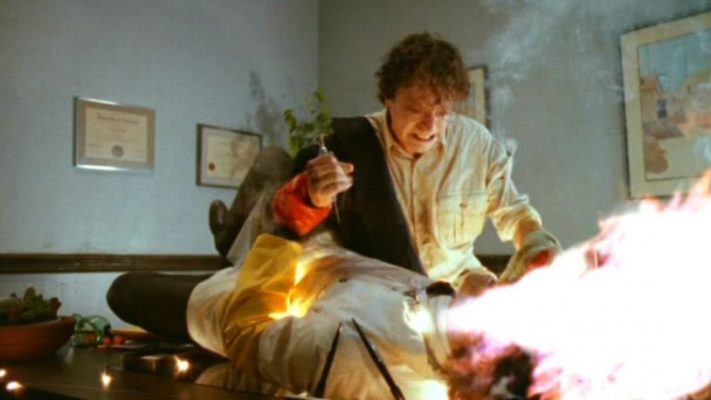
Dourif takes one of the most sympathetic lead roles ever given to him and runs with it. His usual intensity is on full display, but so is his humor and sensitivity. It only takes a couple of scenes to accept him as a believable romantic lead (despite his clear age difference with the much younger Bain) which is important because Hooper moves the film with extreme speed, daring the viewer to piece together the narrative (he does provide all the pieces, but he does not spell out how all of them fit together).
There are a lot of moving parts to SPONTANEOUS COMBUSTION, and if I’m being completely honest, the film only partially works. But when it does work, the resulting scenes are some of the strangest, eeriest, and most fun work of Hooper’s career. The entirety of the prologue is phenomenal and you can feel Hooper’s glee as he gets to recreate the “sci-fi movie look and feel” of the ’50s through sets, costuming, hair/makeup, and mock newsreel footage. But that pop sci-fi feel leads to sudden horror and the sincerely mournful moment of Brian and Peggy burning alive.
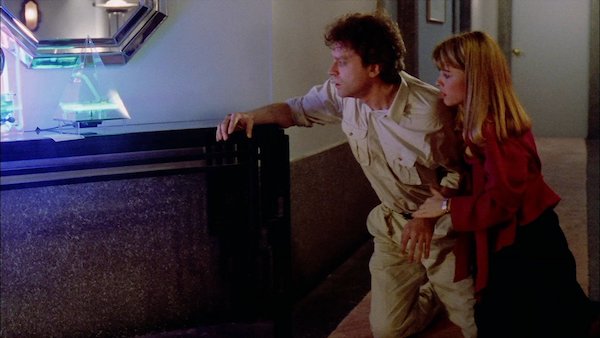
The abrupt turn from the retro feel to the modern effects work is jarring in a way that it never felt in LIFEFORCE or INVADERS, but this is most likely attributed to the much lower budget lending the film a bit of a run-and-gun aesthetic. But that also allows Hooper to indulge more fully in its nuclear monster story beats with a sense of fun (at least when Sam isn’t letting life kick the shit out of him) since the audience is never allowed to think too much about how the plot of the film is old-fashioned and are just asked to hang on for the ride.
For the most part, many of Hooper’s post-SPONTANEOUS COMBUSTION budgets went smaller and smaller and he took on more and more TV work. This, sadly, has been the traditional career arc for many genre filmmakers over the years. While some of his television assignments found him dabbling in sc-fi, in the feature filmmaking world, Hooper never really returned to the genre.
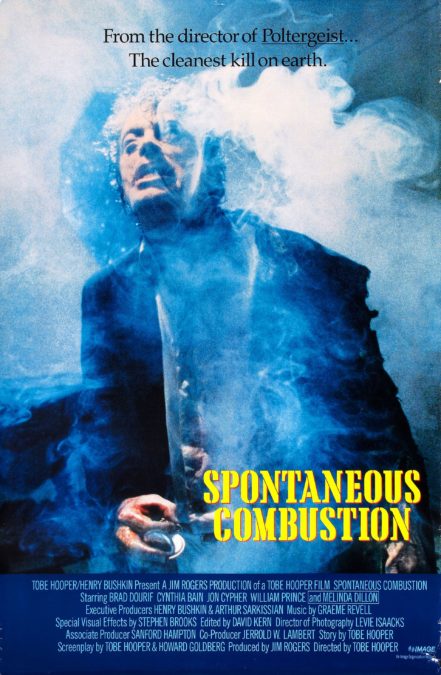
The simple explanation for Hooper’s sudden turn away from straight horror and to sci-fi in the ’80s is that the decade was the start of a more nostalgic time that found entertainment in storytelling styles of the past (thanks to the Indiana Jones and STAR WARS films) and that he simply went along with the popular flow. But he was never a filmmaker who was interested in going along with what was popular. The three films I have written about here have a heavy subversive current that turns their pulpy sci-fi plots on their heads—as though Hooper took the nostalgia of his fellow baby boomers, turned it inside out and forced them to look at how bad things actually were in the nostalgic wonderland that Ronald Reagan was selling the American public.
But at the same time that Hooper was using nostalgia to sneak in the message that trying to return to “the good old days” was a fool’s errand that only harmed efforts to move forward, it is undeniable that he loved the types of films that he was emulating. He simply brought a cynicism to them of a man who lived through a time when he realized that the powers-that-be very rarely had everyone’s best interests at heart. That push and pull between loving the look and feel of ’50s and ’60s sci-fi and wanting to bring modern pessimism to the stories is what gives LIFEFORCE, INVADERS FROM MARS, and SPONTANEOUS COMBUSTION the staying power they have had.
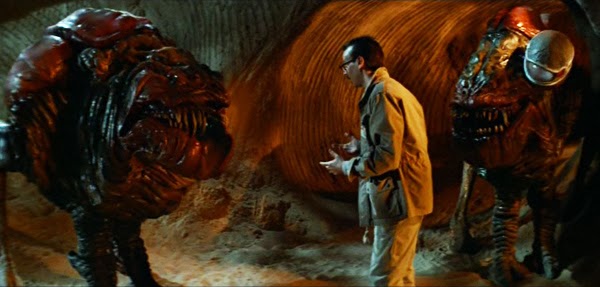
–Matt Wedge (@MovieNerdMatt)
Tags: Aubrey Morris, Brad Dourif, Brian Bremer, Cannon Films, Colin Wilson, Cynthia Bain, Dan O'Bannon, Dey Young, Don Jakoby, Frank Finlay, From Mars, Hunter Carlson, Invaders, James Karen, John Dykstra, Jon Cypher, karen black, Laraine Newman, Lifeforce, Louise Fletcher, Menahem Golan, Michael Gothard, Nicholas Ball, Patrick Stewart, Peter Firth, Richard Blake, Sci-Fi, Spontaneous Combustion, Stacey Edwards, Stan Winston, The Space Vampires, Timothy Bottoms, Tobe Hooper, Yoram Globus


No Comments